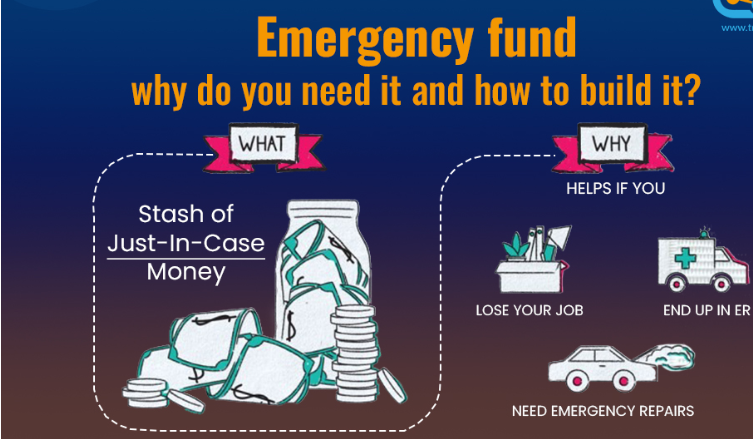How to Build an Emergency Fund: Why It Is Crucial and How Much to Save
Life is unpredictable. Unexpected expenses—such as medical emergencies, car repairs, or job loss—can put financial strain on you if you’re not prepared. An emergency fund acts as a financial safety net, helping you stay afloat without resorting to debt or dipping into long-term investments.
In this blog post, we’ll cover why an urgent fund is essential, how much you should save, and practical steps to build one.
Why an Emergency Fund Is Crucial
1. Protects You from Unexpected Expenses
Emergencies can happen at any time. A sudden medical bill, home repair, or car breakdown can disrupt your finances if you don’t have savings set aside.
2. Prevents Debt Accumulation
Without an urgent fund, you may need to rely on credit cards or loans, which can lead to high-interest debt. Having savings allows you to cover expenses without financial stress.
3. Provides Financial Stability
An emergency fund gives you peace of mind, knowing that you have a cushion to handle tough situations. This financial stability reduces anxiety and helps you make better decisions.
4. Cushions Against Job Loss
Losing your job can be financially devastating. An emergency fund helps cover essential expenses while you look for new employment, preventing the need to make rushed financial decisions.
How Much Should You Save in an Emergency Fund?
The ideal amount depends on your financial situation, lifestyle, and job stability. Here’s a general guideline:
- Basic Fund: Start with at least $1,000 to cover small emergencies.
- 3-6 Months of Expenses: Aim to save three to six months’ worth of living expenses to cover rent/mortgage, utilities, groceries, insurance, and transportation.
- 12+ Months (If Needed): If you have irregular income (e.g., freelancers, entrepreneurs) or high financial responsibilities, consider saving 9-12 months’ worth of expenses for added security.
To calculate your emergency fund:
- List your essential monthly expenses.
- Multiply by 3-6 (or more) months based on your needs.
Example:
- Rent/Mortgage: $1,200
- Utilities: $200
- Groceries: $400
- Transportation: $150
- Insurance: $250
- Other Essentials: $300
- Total Monthly Expenses: $2,500
Emergency Fund Goal:
- 3 months: $7,500
- 6 months: $15,000
- 12 months: $30,000
How to Build an Emergency Fund
1. Set a Realistic Savings Goal
Determine how much you need based on your essential expenses and set a timeline to achieve it. Start small and gradually increase your contributions.
2. Create a Separate Savings Account
Keep your emergency fund in a high-yield savings account or money market account for easy access while earning interest. Avoid mixing it with your regular checking account to prevent unnecessary spending.
3. Automate Your Savings
Set up automatic transfers from your paycheck or checking account to your emergency fund. Even small, consistent deposits add up over time.
4. Cut Unnecessary Expenses
Review your budget and identify areas where you can reduce spending (e.g., dining out, subscriptions, impulse purchases). Redirect those savings to your emergency fund.
5. Use Windfalls Wisely
Allocate bonuses, tax refunds, side gig earnings, or gifts toward your emergency fund instead of spending them impulsively.
6. Increase Your Income
Consider taking on a side hustle, freelancing, or part-time work to boost your savings faster. Even an extra $100 per month can make a big difference.
7. Save Unexpected Money
Whenever you receive unexpected cash, such as refunds or cashback rewards, add it to your emergency fund instead of spending it.
8. Stay Consistent and Adjust as Needed
Your financial situation may change over time, so review and adjust your savings goal periodically to ensure it aligns with your needs.
When to Use Your Urgent Fund
Your emergency fund should be used only for genuine emergencies, such as:
✔ Medical expenses
✔ Job loss
✔ Urgent car or home repairs
✔ Unexpected travel for family emergencies
Avoid using it for:
❌ Shopping or vacations
❌ Non-essential home upgrades
❌ Investing in risky assets
If you use your emergency fund, make it a priority to replenish it as soon as possible.
Final Thoughts
An urgent fund is one of the most important financial tools for stability and peace of mind. By saving consistently and making smart financial choices, you can build a strong safety net to protect yourself from unexpected financial hardships.




